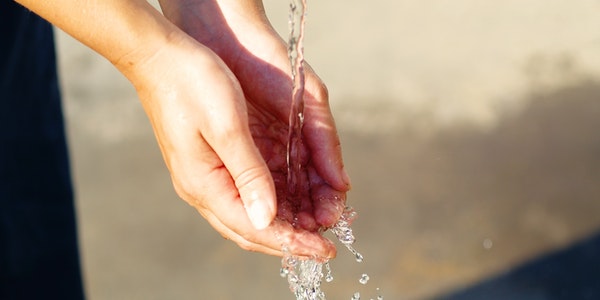The COVID-19 pandemic is believed to have originated in a wet market in Wuhan, China. Its virulent and deadly nature gripped the world, but at the same time, widened our understanding of how certain air-borne diseases are spread.
[the_ad id=”13371″]
While we are gradually transitioning into a post-pandemic age, we must not forget the hard lessons of the COVID-19 pandemic, particularly those pertaining to hygiene and the other ways in which deadly diseases can spread.
What are waterborne diseases?
Waterborne diseases are diseases which are spread by consuming contaminated water or food, or through contact with faeces that contain harmful bacteria, viruses, parasites and other disease-causing micro-organisms.
Poor hygiene practices such as preparing, handling or consuming food and water without proper cleansing and handwashing can lead to contamination and the spread of waterborne diseases. Additionally, improper disposal of industrial waste, human waste, animal waste, garbage and contamination from untreated sewage can also cause water contamination.
Other factors such as inadequate water supply, poor sanitary conditions, uncovered sources of drinking water, open defecation, particularly near sources of drinking water, and a lack of awareness can increase the likelihood of water contamination and the spread of disease.
Waterborne diseases are a serious threat
Water-borne diseases pose a huge public health threat to India. They spread quickly and can affect large sections of the population. They can also have a significant impact on the country’s economy and healthcare system.
According to the World Bank Group, waterborne diseases affect nearly 37.5 million Indians every year and around 21% of communicable diseases in India are water-related. Additionally, India ranks 122 out of 123 countries surveyed on the safe water index, while the groundwater in one-third of the districts in India is not fit for drinking due to the unsafe concentration of fluoride, iron, salinity and arsenic which exceeds tolerance levels.
Data also points to the fact that four main waterborne diseases – cholera, typhoid, acute diarrhoeal diseases and viral hepatitis accounted for 2439 deaths in 2018, while 11,768 people have died from these diseases over the last 5 years. Another report states that around 1.5 million children die from diarrhoea each year. In addition to this, it is estimated that waterborne diseases lead to an economic burden of nearly $600 million a year.
While rural populations are particularly at risk of contracting waterborne infections, everyone is vulnerable due to contaminated and polluted water.
Prevalent waterborne diseases in India
Typhoid
Typhoid fever and paratyphoid fever are potentially fatal waterborne bacterial infections caused by Salmonella typhi and Salmonella paratyphi bacteria respectively.
The disease is transmitted when an infected person uses the bathroom and does not wash their hands. The bacteria on their hands can contaminate everything that the person touches, including food. It is also spread if water is contaminated by the bacteria.
Both typhoid fever and paratyphoid can cause similar symptoms such as high fever, diarrhoea, vomiting, abdominal pain, body chills and extreme weakness and cough.
Typhoid can only be treated by antibiotics, but oral medication and vaccines can offer some protection against the disease. These vaccines, however, are not 100 percent effective against prevention of typhoid.
Cholera
Cholera is a highly virulent and life-threatening waterborne disease caused by the bacterium Vibrio cholerae. It is spread through contaminated food and water.
According to a WHO report, there are around 4 million cases of cholera each year. India is no stranger to cholera outbreaks and there are still active cholera cases in the country.
After the bacteria is ingested, it reaches the intestine and starts to produce toxins that cause diarrhoea, along with other symptoms such as nausea, vomiting, abdominal pain, muscle cramps and thirst.
Treatment for cholera includes intravenous fluids for patients who are severely dehydrated, along with antibiotics and Zinc supplements to fight infections and build resistance.
Malaria
Malaria is a disease caused by the Plasmodium parasite and is transmitted by the female Anopheles mosquito. The disease is transmitted through the bite of a carrier mosquito. The parasite enters the bloodstream and goes to the liver, where red blood cells are produced. It then attacks red blood cells causing them to burst, therefore, resulting in the manifestation of symptoms and the onset of the disease.
According to the WHO, there are approximately 15 million reported cases of malaria in India each year.
Some of the symptoms of malaria include mild to severe shaking and chills, high fever, nausea, vomiting, continuous sweating, headaches, abdominal pain, diarrhoea and muscle pain. In severe cases patients can also experience convulsions and bloody stools. Malaria is potentially fatal.
Treatment of malaria begins with a blood test to determine important parameters including the type of malaria present, if the parasite is drug-resistant, if the disease has led to anaemia, or if any vital organs have been affected. A variety of medications are then prescribed to treat the disease.
Hepatitis A and Hepatitis E
Hepatitis A and hepatitis E are infections of the liver caused by the Hepatitis A virus (HAV) and Hepatitis E virus (HEV), respectively. They can be contracted through contaminated food and water, or through direct contact with an infected person.
Hepatitis A is often associated with unclean food and water, poor personal hygiene, inadequate sanitation and oral-anal sex. Hepatitis A can manifest through various symptoms including fever, malaise, diarrhoea, nausea, loss of appetite, abdominal discomfort, dark-coloured urine and jaundice (yellowing of the eyes and skin). People affected by the disease can also be asymptomatic. Although the recovery rate is very high, the infection can be fatal if the infected person develops fulminant hepatitis (rapid liver failure).
Hepatitis E is most often spread through water contaminated by faeces from people who are infected with the virus. People have also contracted the diseases after eating raw or undercooked pork, venison, wild boar, or shellfish. Symptoms are similar to hepatitis A and include nausea, fatigue, loss of appetite, abdominal pain and jaundice.
There is currently no vaccine for hepatitis E, however, except for those with comprised immune systems, the majority of patients do recover fully without lifelong complications.
Giardiasis
Giardiasis is a waterborne parasitic infection caused by the water-based pathogen Giardia. It spreads through contaminated food and water, or through human-to-human contact. Giardiasis is mostly found around swimming pools, lakes and public water bodies.
It affects the small intestine and causes symptoms such as nausea, vomiting, diarrhoea, gas, loss of appetite, abdominal pain, headache and extreme tiredness and fatigue.
Usually, treatment of giardiasis includes that for dehydration and the prescription of antiparasitic drugs which can speed up the treatment process.
Amoebic Dysentery & Bacillary Dysentery
Amoebic dysentery is a water borne disease that mainly spreads through contaminated food, water and contact with faecal matter. It is an intestinal infection which leads to inflammation of the intestine and causes severe abdominal cramps and diarrhoea, and oftentimes, blood and mucus in the stools.
Bacillary dysentery is caused by Shigella, Campylobacter, E. coli and Salmonella types of bacteria. Symptoms include diarrhoea with blood or mucus, stomach cramps, nausea, vomiting and fever.
Dysentery can be confirmed through a blood or stool test and rehydration methods will be recommended, along with medications and antibiotics, if necessary.
Is the next pandemic lurking in our water?
While these are just a few of the waterborne disease prevalent in India, there are many other diseases which can be transmitted through our water. We must think about the ways in which deadly diseases can be eradicated to prevent their devastating effects, or worse – another pandemic. We must also understand how our surface and groundwater are being contaminated due to improper waste disposal, poor hygiene practices and industrial contamination.
It is estimated that just 30 per cent of waste-water from our cities is treated before disposal, while the rest is left to flow into our rivers, lakes, and groundwater. What is lurking in our water can be an invisible threat.
While we cannot always see the contamination in our water, to prevent the spread of these waterborne diseases, it is important to raise awareness within our communities to inculcate healthy and safe practices to protect our water.
Water is life. Safe water is health.
Source:

Sudha Joshi Betarbet
Health Editor
